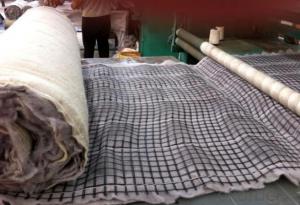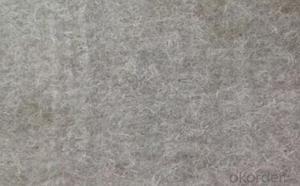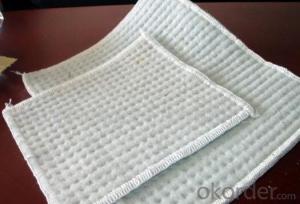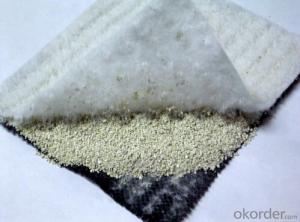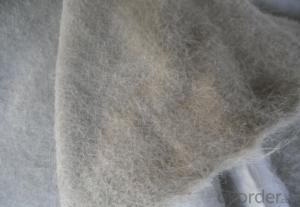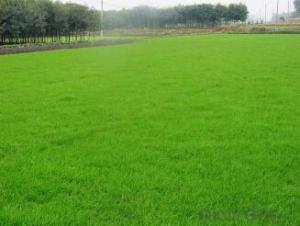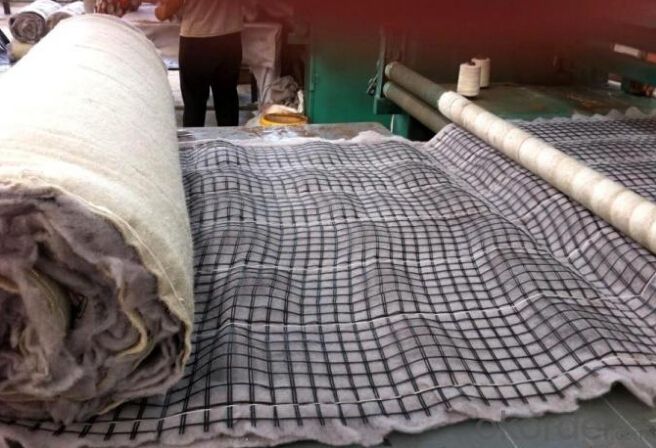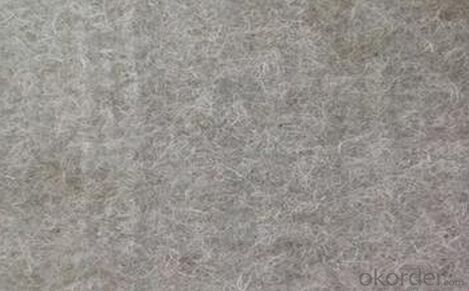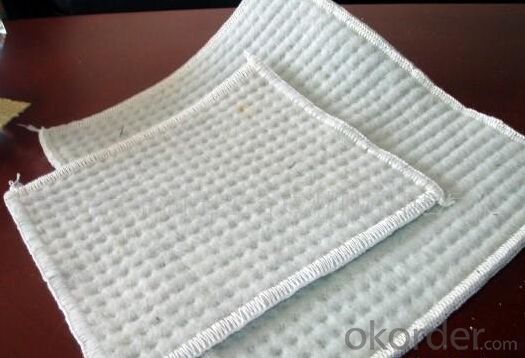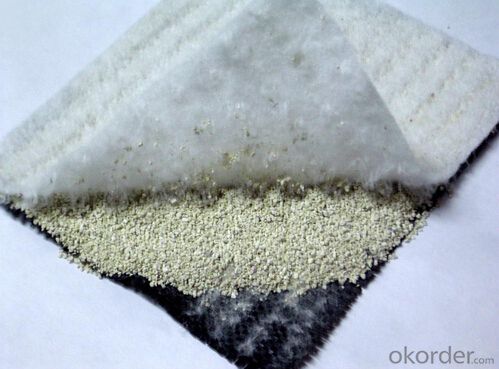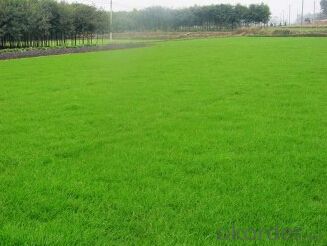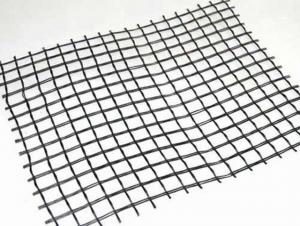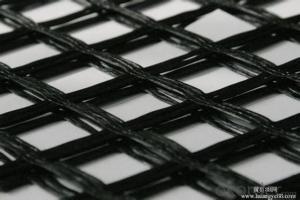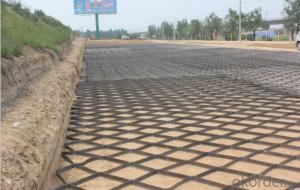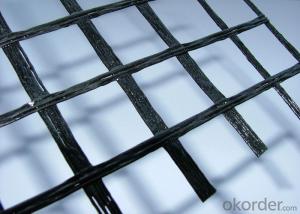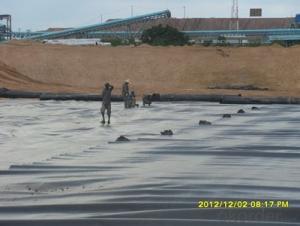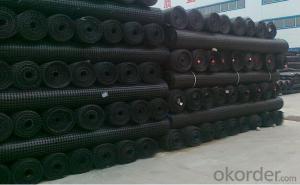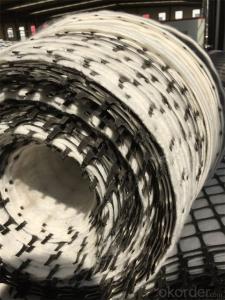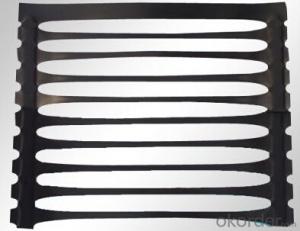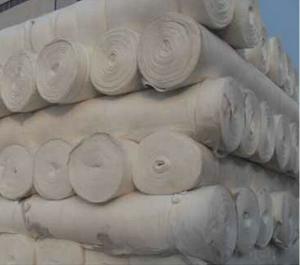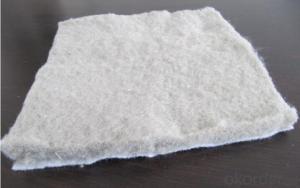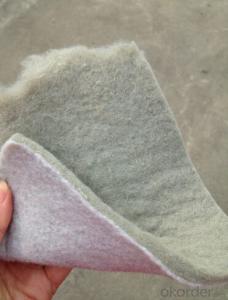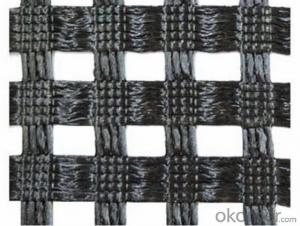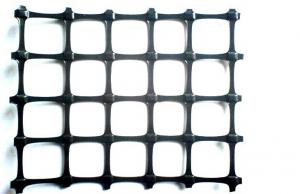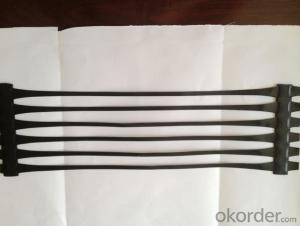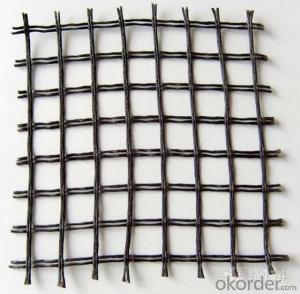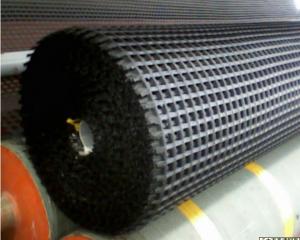Geogrids Husker Nutrition Geotextile for Greening White
- Loading Port:
- Qingdao
- Payment Terms:
- TT OR LC
- Min Order Qty:
- 5000 m²
- Supply Capability:
- 2000000 m²/month
OKorder Service Pledge
OKorder Financial Service
You Might Also Like
Nutrition geotextile in water environmental engineering .
Specification:
Geotextile has excellent permeability, acquired, durability, which can be widely used in railway ,highway, movement hall,Dams,hydraulic structures hence hole, coastal shoal, reclamation,environmental protection and other projects. The main products are Synthetic staple fibers needle punched nonwoven geotextiles and split film yarn woven geotextiles.
Product Feature:
1. Simple and fast construction
2. Achieve the greening effect quickly after construction
3. Due to the grass and composite fiber fabrics become into one integration, so it has the ability of certain degree of flow resistance for the water rising before the grass survive.
4. Composite fiber fabric is a continuous structure from slope top to slope toe, both ends are fixed, has high water flow resistance.
Technical Specification
5.0 m length and 1.05 m width. Reverse side all used filter material. Grass seeds: Bermuda grass (warm season grass), Bahia grass (warm season grass), Kentucky bluegrass (cold season grass), Tall fescue grass (cold season grass), Red fescue grass (cold season grass). Plant height: 0.1 ~ 0.5 m.
| NO. | Items | Specification | Notes | |||
| 1 | Total unit area weight g/sq.m | ≥380 | ||||
| 2 | dimension | width m | 1.0~2.0 | |||
| length m | as per user’s request | |||||
| 3 | Composite fiber fabrics | Material | Polyester Fiber | High strength PET | ||
| Unit area weight g/sq.m | ≥160 | |||||
| Mesh dimension mm | 8×8 | |||||
| Extension strengh kn/m | ≥11 | MD & CD | ||||
| 4 | Filtra layer | Material | Polyester non woven geotextile | |||
| Unit area weight g/sq.m | ≥40 | |||||
| 5 | Grass seeds, Fertilizer | Type | According to actual situation choose 3~5 grass seeds | |||
| Plant height m | 0.1~0.3 | |||||
| 6 | Fiber layer | Material | wood pulp cellulose | |||
| Unit areaweight g/sq.m | ≥15 | |||||
| 7 | flow resistance | ≥4 | not allow appear scour, suction and blanket turn-over etc. damage phenomenon | |||
| M/s | ||||||
| 8 | Anti-UV strengh conservation rate % | 65~80 | 3000hrs Continuously exposure 3000hrs | |||
| 9 | Supporting spare parts | ABS fastening nail | Material | ABS Resin | Fixed between two blankets by length direction | |
| Fiber diameter mm | 35 | |||||
| Nail length mm | 325 | |||||
| Lnail | Material | Steel wire (content 10% zinc-aluminium alloy) | Used to fix single blanket | |||
| Fiber diameter mm | 4 | |||||
| Nail length mm | 200 | |||||
| ABS connecting nail | Material | ABS Resin | Used in the slope between the two blankets ( width direction) | |||
| Nail length mm | 38 | |||||
| Connecting fiber | Material | High strength Polypropylene | Used in the slope between the two blankets ( width direction) | |||
| Length mm | Cut as per request | |||||
APPLICATION:
Generally laid on the river channel, slope protection etc. slope revetment projects, to control the water erosion, soil loss, meantime can reach the effect of slope ecological restoration and landscape greening, making river back to natural.
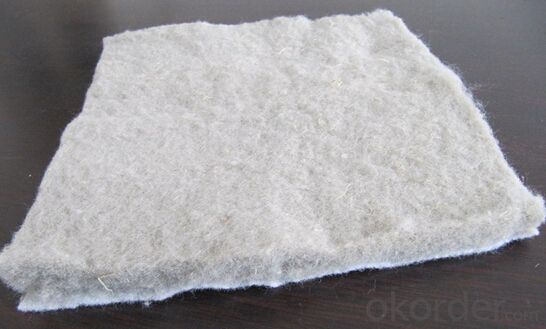
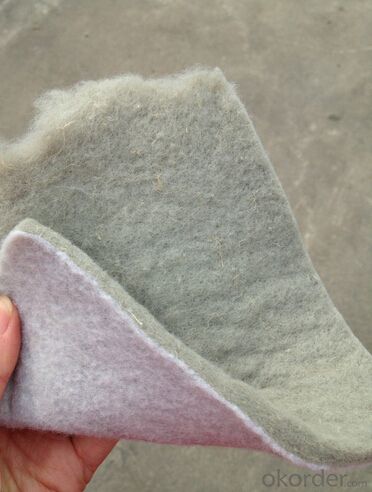
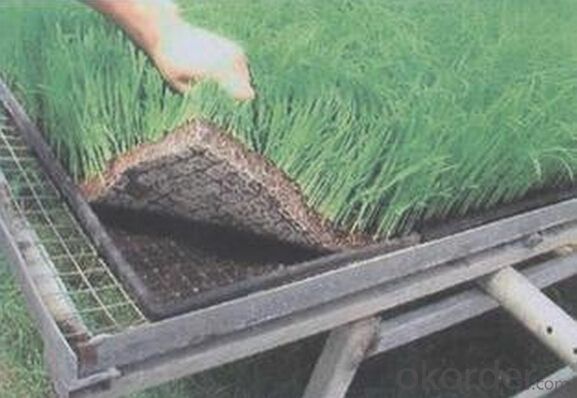
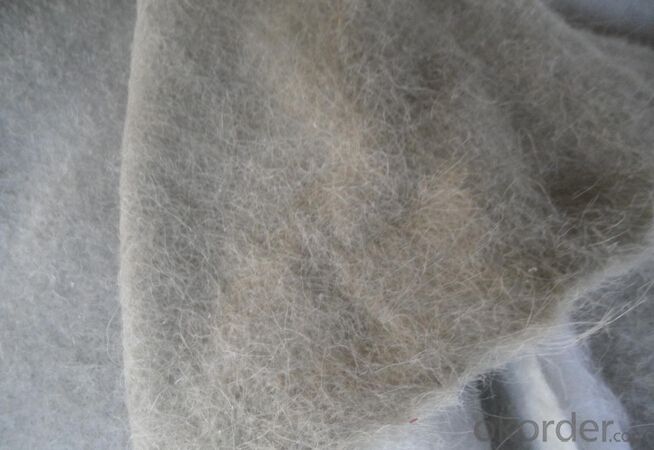
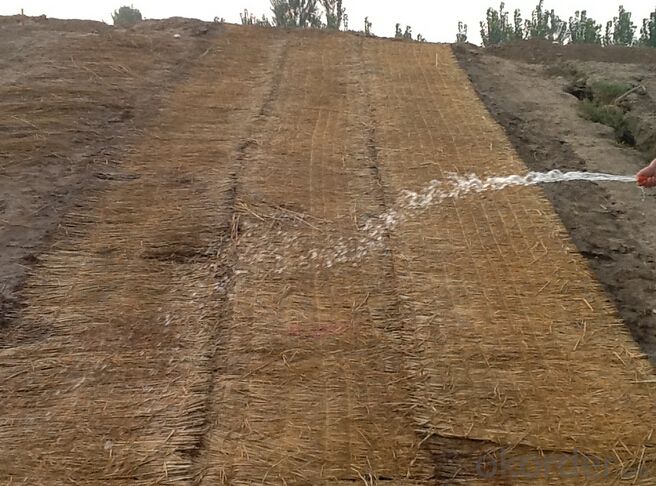
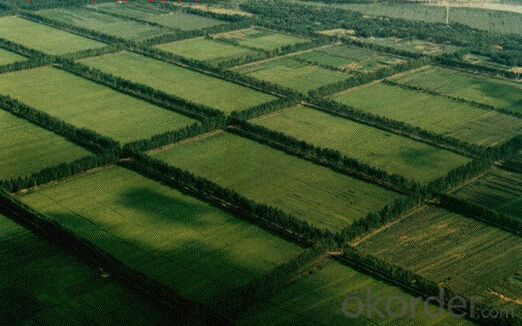
- Q: What are the advantages of using geogrids in construction projects?
- Geogrids offer several advantages in construction projects. Firstly, they provide reinforcement to the soil, increasing its stability and load-bearing capacity. This helps to prevent soil erosion, slope failures, and settlement issues. Secondly, geogrids are cost-effective as they reduce the need for extensive excavation and the use of additional materials. They also facilitate faster construction time as they can be easily installed. Additionally, geogrids are durable and resistant to environmental degradation, ensuring long-term performance and reduced maintenance. Overall, the use of geogrids in construction projects leads to improved safety, enhanced structural integrity, and cost savings.
- Q: Can geogrids be used in reinforcement of slopes and embankments?
- Yes, geogrids can be used in the reinforcement of slopes and embankments. Geogrids are often used to improve the stability and strength of soil structures by providing reinforcement and preventing soil movement. They are effective in enhancing the load-bearing capacity of slopes and embankments, reducing soil erosion, and increasing overall stability.
- Q: How are geogrids connected to the surrounding soil?
- Geogrids are connected to the surrounding soil through a process called interlocking. The geogrids have open spaces or apertures that allow soil particles to fill in, creating a bond between the geogrid and the soil. This connection helps improve the stability and load-bearing capacity of the soil, making it more resistant to erosion and preventing the geogrid from slipping or moving out of position.
- Q: Can geogrids be used in temporary construction access mats?
- Yes, geogrids can be used in temporary construction access mats. Geogrids are commonly used to improve the stability and load-bearing capacity of access mats, making them suitable for temporary construction sites. They help distribute the weight of heavy equipment and vehicles and prevent soil erosion, ensuring safe and efficient access for construction activities.
- Q: Can geogrids be used in slope stabilization for railway embankments with high water table conditions?
- Yes, geogrids can be used in slope stabilization for railway embankments with high water table conditions. Geogrids are commonly used in such situations to reinforce and stabilize the soil, preventing erosion and maintaining the integrity of the slope. Their high tensile strength and ability to distribute loads make them suitable for railway embankments with high water table conditions.
- Q: What are the long-term maintenance requirements for geogrid-reinforced structures?
- The long-term maintenance requirements for geogrid-reinforced structures are generally minimal. Geogrids are designed to provide long-lasting reinforcement and stability to structures, reducing the need for frequent maintenance. However, periodic inspections should be conducted to ensure the integrity of the geogrid and identify any potential damages or signs of degradation. In some cases, routine cleaning and removal of debris may be necessary to prevent clogging or obstruction of the geogrid. Additionally, if any issues or damages are detected, prompt repair or replacement of the geogrid may be required to maintain the structural integrity and performance of the reinforced structure.
- Q: How do geogrids help in reducing the risk of differential settlement of structures?
- Geogrids help in reducing the risk of differential settlement of structures by providing a stable base and distributing the load more evenly across the soil. This prevents uneven settling and minimizes differential settlement, which can lead to structural damage and instability.
- Q: Can geogrids be used in reinforced soil slopes for seismic applications?
- Yes, geogrids can be used in reinforced soil slopes for seismic applications. Geogrids are commonly used to reinforce soil and provide stability in various applications, including slopes. In seismic applications, geogrids can enhance the performance of reinforced soil slopes by improving their resistance to lateral movements and reducing soil displacements during earthquakes. The use of geogrids in reinforced soil slopes for seismic applications helps to increase safety and mitigate potential damage.
- Q: Are geogrids suitable for reinforcing railway subgrades?
- Yes, geogrids are suitable for reinforcing railway subgrades. Geogrids provide effective soil stabilization, improve load-bearing capacity, and reduce settlement, making them an ideal solution for reinforcing railway subgrades and ensuring long-term performance and stability of the tracks.
- Q: How do geogrids improve the performance of geosynthetic drainage systems?
- Geogrids improve the performance of geosynthetic drainage systems by providing structural support and enhancing load distribution. They prevent soil erosion and lateral movement, increasing the stability and longevity of the drainage system. Additionally, geogrids improve the overall drainage capacity by promoting water flow and preventing clogging, ensuring effective water removal from the soil.
Send your message to us
Geogrids Husker Nutrition Geotextile for Greening White
- Loading Port:
- Qingdao
- Payment Terms:
- TT OR LC
- Min Order Qty:
- 5000 m²
- Supply Capability:
- 2000000 m²/month
OKorder Service Pledge
OKorder Financial Service
Similar products
Hot products
Hot Searches
Related keywords
